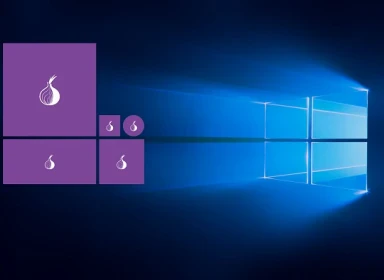
In the cryptic alleys of the darknet, where anonymity reigns supreme, a single oversight can unravel an empire. DrugHub, one of the most notorious marketplaces on the dark web, recently found itself in the crosshairs of scrutiny due to vulnerabilities that came to light in the most unexpected way: through its own branding. This revelation has not only exposed lapses in security but also raised questions about the competence of its creators, setting the stage for a gripping tale of cyber intrigue.
A Logo’s Lethal Secret
The story begins with the innocuous logo of DrugHub. Like any marketplace, branding is key, even in the shadowy corners of the internet. But this logo, created using Adobe Illustrator version 24.0—a software outdated as of 2019—became the first crack in DrugHub’s armor. Embedded within the logo’s metadata was a treasure trove of information for anyone skilled in Open Source Intelligence (OSINT). The use of outdated software was not just a cosmetic flaw; it signaled a broader negligence in keeping up with technological advancements.
For a platform operating in a space where privacy is paramount, every detail matters. The metadata revealed not only the tools used but hinted at the environment in which the logo was crafted. Mac OS, a favorite among creative professionals, appeared to be the operating system of choice. But what could have been a mere quirk of a designer’s preference quickly escalated into a glaring oversight, setting off alarm bells among cybersecurity experts.
Base64 and the Burden of Inefficiency
Adding to the intrigue was DrugHub’s decision to use Base64 encoding for storing and displaying multimedia. While this approach can offer certain advantages, such as reducing the need for external storage, it comes at the cost of increased file sizes—a 33% overhead, to be precise. This inefficiency was not just a technical curiosity but a potential red flag about the team’s understanding of optimal infrastructure design. In the highly competitive and precarious world of darknet marketplaces, such decisions can be the difference between thriving and imploding.
Jabber: A Portal to Vulnerabilities
Another critical vulnerability lay in the platform’s Jabber server configuration. Public documentation revealed the use of port 5222, a choice that, while functional, is fraught with risks. This port, coupled with the use of both Tor and clearnet mirrors, significantly increased the attack surface for adversaries. The possibility of intercepting user data became more than a theoretical risk—it was a plausible scenario that could compromise both buyers and vendors alike.
The decision to operate clearnet mirrors alongside Tor-hidden services compounded the problem. While clearnet mirrors can provide redundancy and accessibility, they also expose the platform to the scrutiny of law enforcement agencies. In DrugHub’s case, the risks were amplified by its server’s geographical location and its choice of hosting providers.
A Tale of Two Domains
DrugHub’s domains, .su and .link, revealed further inconsistencies in its infrastructure. Both domains pointed to the same IP address but used different SSL certificates: Google Trust for one and Cloudflare for the other. This peculiar configuration not only demonstrated a lack of coherence but also hinted at potential mismanagement or negligence in system setup.
Hosting the servers in Dubai added yet another layer of complexity. While the UAE’s hosting infrastructure offers certain advantages, it also brings the platform within the jurisdictional reach of international law enforcement. A bilateral treaty between the UAE and the United States allows for the extradition of individuals involved in criminal activities, making DrugHub’s choice of location a precarious gamble.
Shadows of the Past
DrugHub’s origins trace back to the remnants of White House Market and its eventual merger with Supermarket. The platform’s creators, likely seasoned veterans of the darknet ecosystem, should have known better than to leave such glaring vulnerabilities. Yet, these oversights suggest a departure from the meticulous operational security (OPSEC) practices that once defined successful darknet marketplaces.
Speculation abounds that DrugHub’s servers may have already been compromised by law enforcement. If true, this would not only spell disaster for the platform’s users but also serve as a stark reminder of the stakes involved in operating within this clandestine realm.
The Bigger Picture
DrugHub’s unraveling underscores the inherent fragility of darknet marketplaces. These platforms operate at the intersection of technology, trust, and treachery. A single misstep can cascade into a catastrophic failure, as DrugHub’s saga so vividly illustrates.
The story of DrugHub is more than just a cautionary tale; it is a lens through which we can examine the complexities of the darknet and the human elements that often undermine its supposed invulnerability. As law enforcement agencies and independent security researchers continue to probe the depths of this digital underworld, one thing remains clear: in the darknet, nothing stays hidden forever.
Conclusion
From a seemingly innocuous logo to systemic vulnerabilities, DrugHub’s downfall is a testament to the importance of vigilance in the digital age. It is a story that blends technical intrigue with the high stakes of the darknet, offering a glimpse into a world where even the smallest mistake can have monumental consequences. For now, the fate of DrugHub hangs in the balance, a stark reminder that even in the shadows, the light of scrutiny can find a way in.





Comments 0